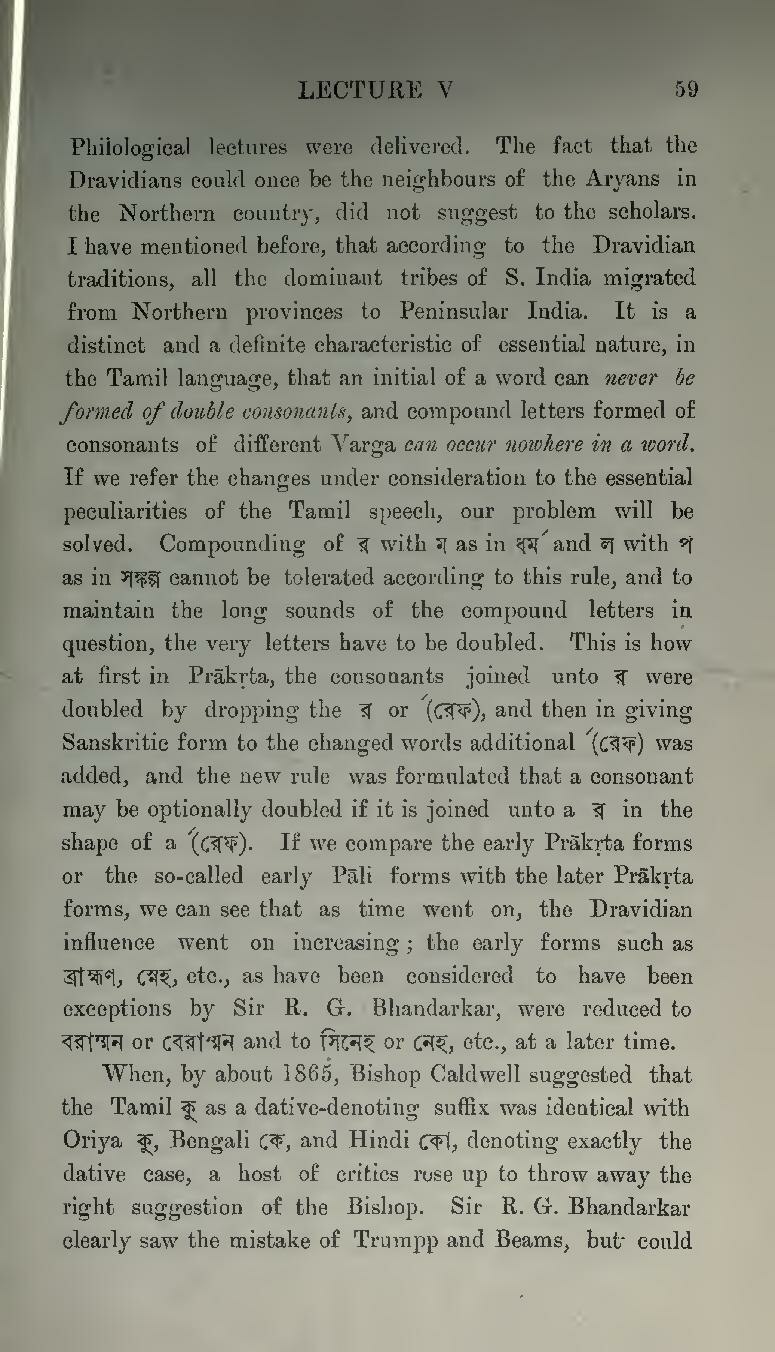Philological lectures were delivered. The fact that the Dravidians could once be the neighbours of the Aryans in the Northern country, did not suggest to the scholars. I have mentioned before, that according to the Dravidian traditions, all the dominant tribes of S. India migrated from Northern provinces to Peninsular India. It is a distinct and a definite characteristic of essential nature, in the Tamil language, that an initial of a word can never be formed of double consonants, and compound letters formed of consonants different Varga can occur nowhere in a word. If we refer the changes under consideration to the essential peculiarities of the Tamil speech, our problem will be solved. Compounding of র with ম as in ধর্ম and ল with প as in সঙ্কল্প cannot be tolerated according to this rule, and to maintain the long sounds of the compound letters in question, the very letters have to be doubled. This is how at first in Prākṛta, the consonants joined unto র were doubled by dropping the র or ´(রেফ), and then in giving Sanskritic form to the changed words additional ´(রেফ) was added, and the new rule was formulated that a consonant may be optionally doubled if it is joined unto a র in the shape of a ´(রেফ). If we compare the early Prākṛta forms or the so-called early Pāli forms with the later Prākṛta forms, we can see that as time went on, the Dravidian influence went on increasing; the early forms such as ব্রাহ্মণ, স্নেহ, etc., as have been considered to have been exceptions by Sir R. G. Bhandarkar, were reduced to বরাম্মন or বেরাম্মন and to সিনেহ or নেহ, etc., at a later time.
When, by about 1865, Bishop Caldwell suggested that the Tamil কু as a dative-denoting suffix was identical with Oriya কু, Bengali কে, and Hindi কো, denoting exactly the dative case, a host of critics rose up to throw away the right suggestion of the Bishop. Sir R. G. Bhandarkar clearly saw the mistake of Trumpp and Beams, but could
